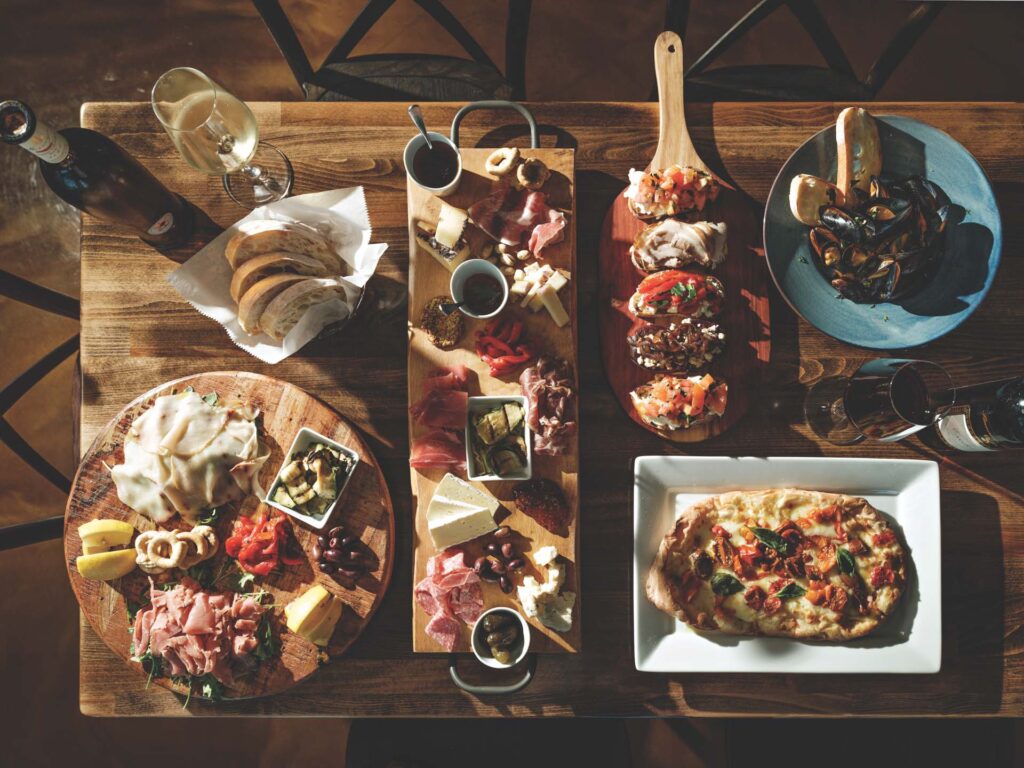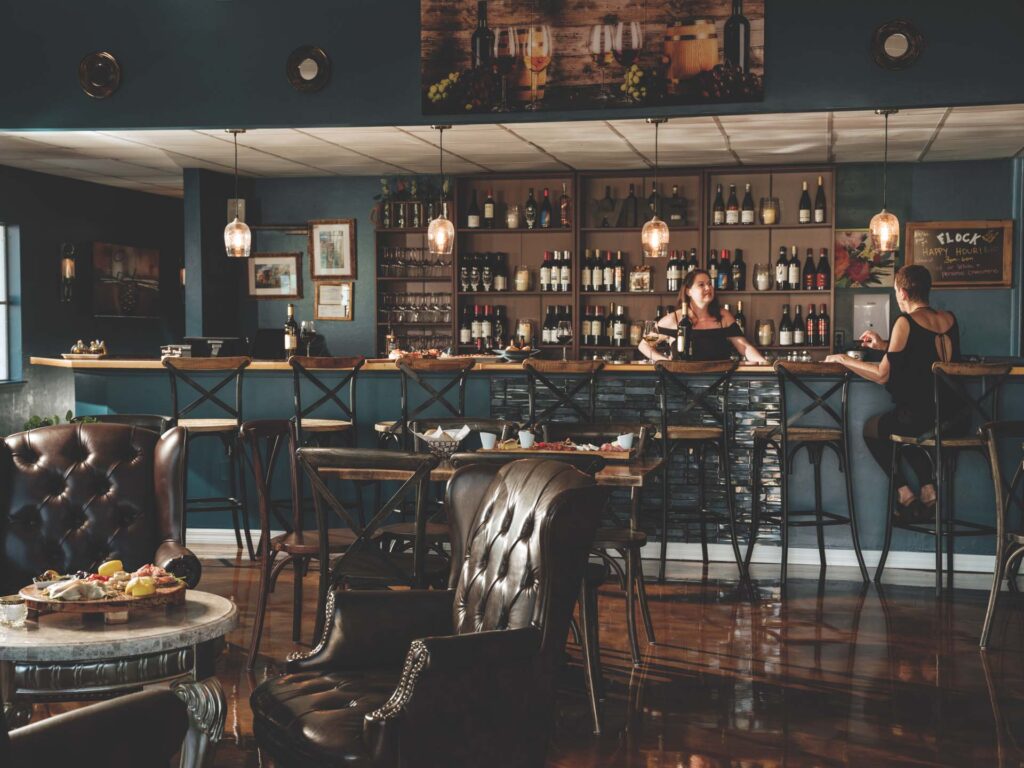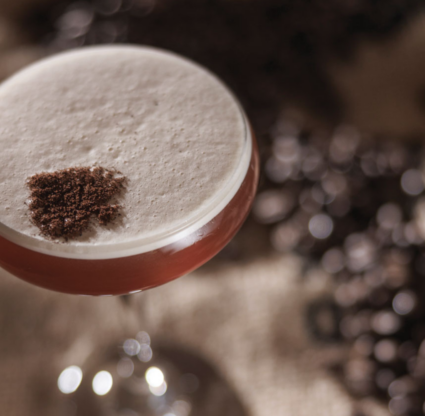At the new Flock Wine Bistro in Fort Myers, husband-wife team Matteo Affatati and Alyson Casey have a small wine list that touches on familiar and unexpected Old and New World producers. They pour anywhere from 30 to 40 labels at a time, and the classics are kept to a minimum. Sure, you’ll recognize grapes and regions, like sauvignon blanc from New Zealand and cabernet sauvignon from Napa Valley. But a good portion of the wines are alternatives to what guests may typically drink. There’s an Etna Bianco that can sub for a pinot grigio and—the owners’ current favorite—Domaine Excelcio, a blend of syrah and grenache from Morocco that could rival your favorite Rhône red. “We want people to challenge conventions when it comes to wine here in Southwest Florida,” Alyson says. “I thought Excelcio would be the hardest for us to sell because most people are unfamiliar with Moroccan wine, but now it’s our best-selling wine.” Oenophiles are intrigued by the wine’s expressive nose alongside its soft and lively full body.
Morocco is one of those tough-to-classify wine countries. While viticulture is believed to date back to Phoenician times, large-scale winegrowing and production were halted in the seventh century with the introduction of Islam and the religion’s bans on alcohol—it didn’t make a comeback until French colonization in the 20th century. The industry has had a few ups and downs in the time since; by the 1950s, Morocco was one of the largest exporters in the world. But vineyards lost their stride when the country gained independence in 1956; French expertise left Morocco, followed by restricting quotas from Europe. Production has been back on the rise since the 1990s, but despite being the second-largest exporter in Africa (after South Africa) and producing more than 40 million bottles per year, only 10 to 15 percent is exported.
“They’ve been making wine for centuries—it’s definitely Old World in my mind,” says Alyson, who admits that when she first sampled Bernard Magrez’s 2018 Domaine Excelcio (60 percent syrah, 40 percent grenache), she didn’t know much about Moroccan wine. She didn’t love it at first, but Matteo was instantly a fan, and the wine started growing on her. When Alyson tried it with Italian charcuterie and aged cheese, the peppery notes of syrah complementing the meat, she became a convert.
The hearty, robust red (“It’s almost meaty,” Alyson adds) has a bit of spice yet is still rounded and elegant and pairs beautifully with the European-inspired charcuterie and cheese boards at Flock Wine Bistro. It also cuts through the fat of toppings like porchetta and melted mozzarella on Flock’s “pinsa” Romana—pizza-like flatbreads. Syrah and grenache is a common blend in the southern Rhône (usually alongside mourvèdre) and dominates the famed Châteauneuf-du-Pape appellation, but Alyson says Excelcio is entirely different in terms of profile. “It’s very earthy—you taste the soil in it,” she explains. “It’s almost like you’re being transported to the sands of Morocco.”
French wine magnate Bernard Magrez—who owns more than 30 wine estates everywhere from Uruguay to four Bordeaux Grand Crus—purchased the Moroccan vineyard, located south of the imperial city of Meknes in the foothills of the Atlas Mountains, in 2005. He acts as the winemaking consultant, deciding on the style with local growers and winemakers. “My goal is to let wine lovers discover a sometimes hidden treasure,” Bernard explains. “Morocco is home to one of the most precious and historical terroirs to produce a well-balanced cuvée, using traditional French and Spanish grapes in the warm climate.”

He’s always had an eye toward the undiscovered, being an early adopter of emerging regions, like Portugal, Uruguay and Morocco. More recently, he’s looking eastward to China, where he’s working with the Ningxia region’s Legacy Peak winery to produce a cabernet and a cabernet-merlot blend, which they’ll export internationally as China continues growing its market.
In Bernard’s Moroccan vineyard, production is on the smaller side—only 3,000 bottles of the 2018 Excelcio vintage remain. And, that’s what Alyson and Matteo appreciate. They like to introduce guests to lesser-known wines, such as Excelcio, through themed tastings and events.
The couple—who met in Rome in 2012, when Italian native Matteo owned a cafe by the Colosseum and Alyson was working as an English professor—aim to bring the Italian aperitivo culture to Southwest Florida. After selling their Roman restaurant, the duo moved to Fort Myers to be closer to Alyson’s family.
The project—modeled after the bars found in Rome’s hipster Monti neighborhood—was in the making for five years as the duo established themselves locally by working in a handful of restaurants. The bar’s name, Flock Wine Bistro, was born during the pandemic, when they were unemployed, drinking a lot of wine and eating charcuterie. “We wanted a name that connotated coming together,” Alyson says, adding that the swallow logo was inspired by a ceramic she saw during a trip to Portugal in 2015. “The swallow leaves its nest and has adventures but always comes home.”





